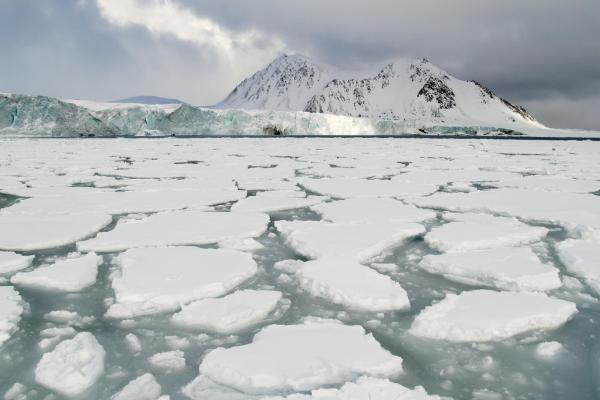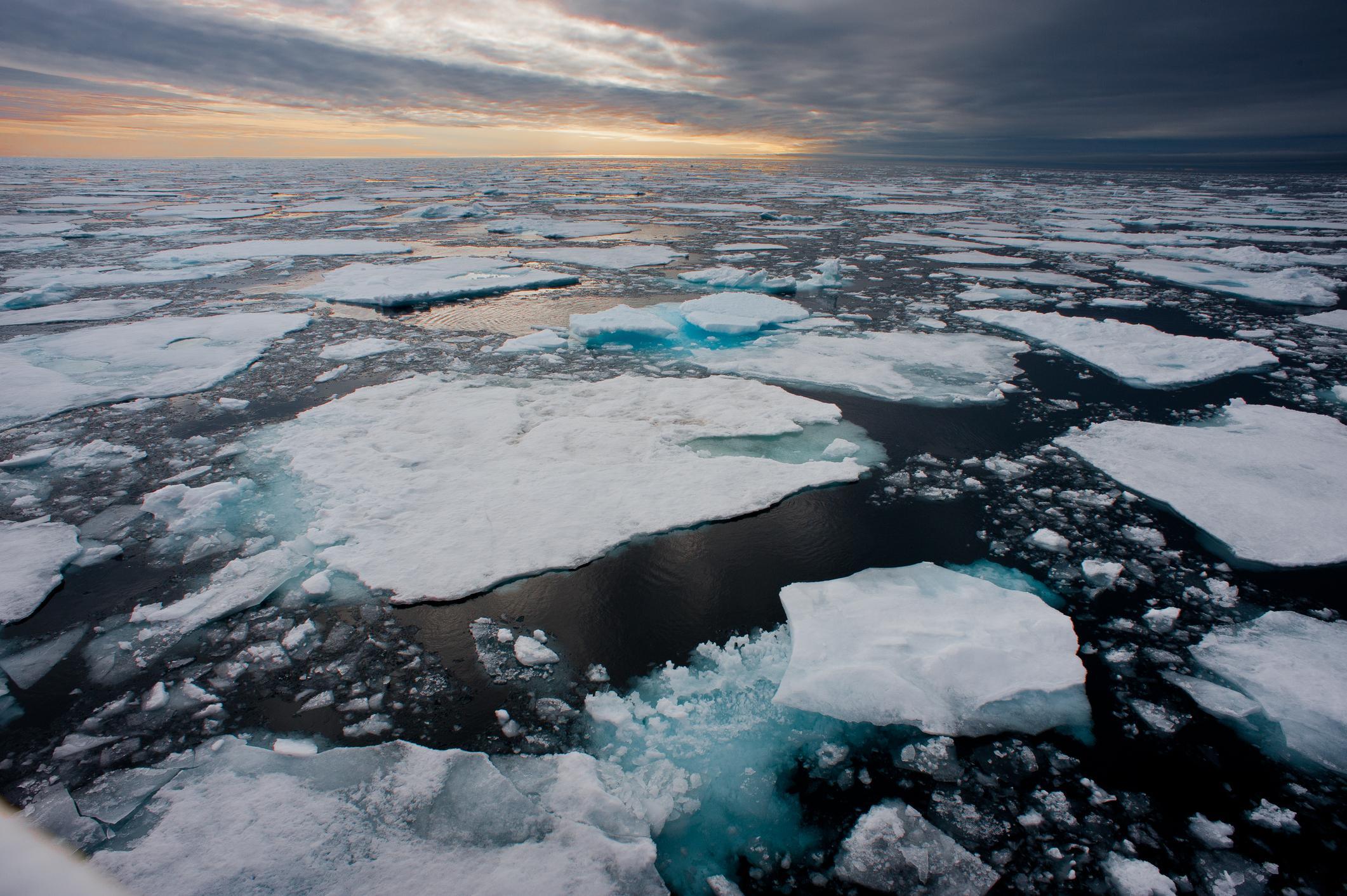Sea Ice Definition, Formation and Examples


Although all ice is frozen water, we categorize this substance in different ways according to certain categorizations. It is for this reason we can know the difference between an ice cube and an iceberg. These characteristics are important as they have various repercussions on Earth's climate, something which indirectly affects the humans who live there. Much of this impact is related to sea ice, something which is widely discussed in environmental circles, but is not always well understood outside of them.
It is for this reason thedailyECO shares this article on sea ice definition, formation and examples. We not only look at how sea ice is formed, but we find out how important it is for our planet.
What is sea ice?
Sea ice is the term for frozen seawater, a phenomenon which occurs in the coldest parts of our planet. Although this definition is straightforward, sea ice itself can present in many forms and has various categorizations. Other than being the result of seawater freezing, it does not always have the same uniform characteristics. For example, it can vary in thickness, with some being only a meter thick and others several meters thick.
One of the most important distinctions of sea ice is whether it is attached to land. It is for this reason we find the following types of sea ice:
- Fast ice: it may be a bit confusing to call this type of sea ice ‘fast’. Not only does it not move quickly, it does not move at all. It is called fast ice because it is fastened to the land, either the coastline, the sea floor or even grounded icebergs. It has variable textures and is immobile.
- Drift ice: also known as brash ice, this is sea ice which is subject to the movements of the sea's currents. When it collects together, it is known as pack ice. Drift ice is made up of ice floes, pieces of frozen sea ice which collect to create drift ice. Drift ice can grow tall thanks to ridges which form in it. These thick pieces of drift ice can causes serious problems for ships trying to navigate them.
Whether attached to land or freestanding, sea ice is very sensitive to small changes in temperature. It forms during the cold winter months, when ocean water freezes into giant blocks. It then partially melts in the warm summer months. This cycle is repeated every year.
This cycle of the ice on sea melting and then growing again points towards another categorization of sea ice. Specifically, age. Some sea ice is so young that it doesn't have much solidity because tit is made from frazil ice (loose ice crystals coming together) or slush. Once it gets older, it will become thicker and form new sea ice. Old sea ice is that which has survived at least one summer melt.
As stated above, sea ice develops in the coldest regions of the world. This means they appear at the poles. Scientists have been studying two main types of sea ice sheets:
Arctic sea ice
The Arctic Ocean is north of the Arctic Circle and borders the northern part of the Atlantic Ocean. According to data from NASA, although the formation of sea ice in the Arctic has been permanent, the general trend in recent years is clear. The Arctic is losing sea ice throughout the year and this loss is likely to be even greater due to of global warming.
The underlying cause of this melting sea ice is because the average temperature over the Arctic has increased significantly in the last 50 years. As a consequence, the melting process is increasing. Unlike the Antarctic sea ice, the growth of the Arctic ice area in winter is limited by the continental masses that almost completely surround the Arctic Ocean.
Antarctic sea ice
Located in the southern hemisphere of planet earth, the Antarctic sea ice tends to disappear mostly during the austral summer. It then re-forms during the winter, reaching an extension similar to that of the continent. In the cold months, known as polar night, the extent of sea ice can reach 18.8 million km². However, during the polar day, the following six months in which the sun never sets, this can suffer a decrease of 2.6 million km².

Characteristics of sea ice
On the surface, sea ice may appear to be a completely white and bleak landscape that seems devoid of life. In actuality, there is a great range of biodiversity which can be found on sea ice. In fact, many of the species which find their home on sea ice depend on these terrestrial environments to complete their life cycle. Some carry out part of this life cycle on the ice, while others need surfaces not covered by ice to survive.
The impact of global warming on the Antarctic megafauna is not as notable as in the Arctic. In the Arctic, the loss of ice on sea negatively influences the reproductive success and survival of various species, including the polar bear (Ursus maritimus). Although the impact is less, Greenland seals (Pagophilus groenlandicus) and hooded seals (Cystophora cristata) are also affected because they need the presence of the pack ice to raise their pups.
Here is a list of some species that can be found on the Arctic sea ice :
- Polar bear (Ursus maritimus)
- Walrus (Odobenus rosmarus)
- Greenland or harp seal (Pagophilus groenlandicus)
- Arctic fox (Vulpes lagopus)
- Narwhal (Monodon monoceros)
This does not mean there are no animals on the Antarctic ice sheets. They contain less species, but we can find:
- King penguin (Aptenodytes patagonicus)
- Aouthern rockhopper Penguin (Eudyptes chrysocome)
- Antarctic giant petrel (Macronectes giganteus)
- Southern right whale (Eubalaena australis)
- Leopard seal (Hydrurga leptonyx)

How a sea ice forms
Sea ice forms from the freezing of surface water. This is because the water underneath is not cooled enough by the specific heat of the sea and its remarkable resistance to temperature change. For the salt water solidification process to begin, it takes –1.8 °C (28.76 ºF) before making its cryoscopic descent. Small crystals of pure water are formed at first, which then gradually gather together until the ice pack is made up of a large aggregate of ice.
During the freezing process of seawater, salt ends up being excluded from the ice crystals. This is because inorganic salts are excluded from the ordered molecular structures that make up the sheet of sea ice.
What is the difference between sea ice and icebergs?
The presence of salt is something which helps us distinguish between sea ice and icebergs. Both are large pieces of ice on sea. However, icebergs are made of freshwater and exist because they break off from glaciers or ice shelves. Icebergs can be of varying size, but they are usually taller since they are broken off land, rather than forming from frozen seawater. They also both present significant danger to passing ships.
Learn more about how nature organizes itself with our guide to understanding natural regions.

Importance of sea ice
Ice sheets play a fundamental role related to their ability to regulate the balance of atmospheric and ocean heat. This is because they reflect significant solar radiation during summer and function as a thermal insulator in winter.
Likewise, they make up a habitat that supports numerous trophic networks. This is because sea ice constitutes a feeding, reproduction and breeding site for many species. Sea ice is also a good indicator of impacts related to global warming and climate change.
In addition to melting sea ice, climate change affects our planet's ecosystems in various ways. In an effort to help us to better understand these repercussions, you can take a look at our article on types of environmental impact.
If you want to read similar articles to Sea Ice Definition, Formation and Examples, we recommend you visit our Ecosystems category.
- Barbosa Alcon, A. (2011). Effects of climate change on Antarctic penguins.
- Forcada, J. (2007). Climate change and its repercussions on the Antarctic megafauna. Impacts of global warming on polar ecosystems.
- Villamor, J. D. V., & Rey-Baltar, D. Z. (2015). The impact of melting icebergs on sea level.








